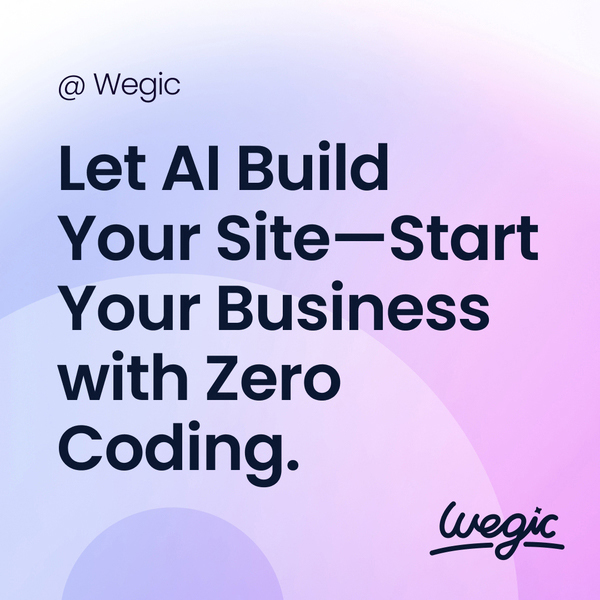Web Design New Orleans Trends
How to Master Web Design New Orleans
Web Design New Orleans
Cooking and baking are not only enjoyable activities, but they can also be a great way to express creativity and share delicious food with others. If you run a food blog or website, building recipes is a crucial part of your content creation. Whether you are a seasoned chef or a home cook, creating enticing and unique recipes can help you attract more visitors to your website and keep them coming back for more. Here are some tips on how to build recipes on your website that will impress your audience and keep them engaged.

The Benefits of Web Design New Orleans
Web Design New Orleans
Website builders are online tools that allow users to create their own websites without needing to know how to code or design. These platforms provide a user-friendly interface with drag-and-drop functionality, making it easy for anyone to create a professional-looking website quickly and affordably.
There are many website builders available on the market, each offering different features and pricing plans. Some popular website builders include Wix, Squarespace, Weebly, and WordPress. In this article, we will discuss the benefits of using a website builder and how to choose the right one for your needs.
Benefits of Using a Website Builder
1. Easy to use: Website builders are designed for users with little to no technical skills. The drag-and-drop interface makes it easy to customize the design and layout of your website without having to write a single line of code.
2. Cost-effective: Hiring a professional web designer can be expensive, especially for small businesses or individuals on a tight budget. Website builders offer affordable pricing plans that include hosting, domain registration, and customer support, making it a cost-effective option for creating a website.
3. Customizable templates: Website builders offer a wide range of pre-designed templates that you can customize to fit your brand and aesthetic. These templates are responsive, meaning they will automatically adjust to different screen sizes, ensuring your website looks great on any device.
4. Built-in features: Website builders come with built-in features such as e-commerce functionality, SEO tools, and analytics, making it easy to optimize your website for search engines and track visitor behavior. These features are essential for growing your online presence and reaching a wider audience.
5. Quick deployment: With a website builder, you can have your website up and running in a matter of hours, compared to hiring a web designer, which can take weeks or even months to complete. This quick deployment allows you to start promoting your products or services online sooner.
How to Choose the Right Website Builder
When choosing a website builder, it’s important to consider your specific needs and goals. Here are some factors to consider when selecting the right website builder for your project:
1. Ease of use: Look for a website builder with an intuitive interface and drag-and-drop functionality that makes it easy to customize your website without any technical skills.
2. Templates: Consider the variety and quality of templates offered by the website builder. Choose a platform that provides a range of professionally designed templates that you can customize to fit your brand.
3. Features: Look for built-in features such as e-commerce functionality, SEO tools, analytics, and social media integration that will help you optimize your website for search engines and reach a wider audience.
4. Pricing: Consider your budget and choose a website builder with pricing plans that fit your needs. Some website builders offer free plans with limited features, while others offer premium plans with additional benefits.
5. Support: Choose a website builder that offers customer support through live chat, email, or phone to help you troubleshoot any issues or questions you may have while building your website.
While some business owners may attempt to handle SEO on their own, hiring a professional SEO service provider can offer numerous benefits and ensure that your website is optimized effectively. In this article, we will discuss the importance of website SEO services and how they can help your business grow.
1. Enhanced Visibility
One of the primary goals of SEO is to increase the visibility of your website in search engine results. When your website ranks higher in search results, it is more likely to be clicked on by users looking for products or services that you offer. Professional SEO services can help optimize your website for targeted keywords, improve your website’s content and user experience, and implement strategies to increase your website’s visibility in search results.
2. Increased Website Traffic
By improving your website’s visibility in search results, SEO services can help drive more organic traffic to your website. Organic traffic refers to users who find your website through search engines rather than through paid advertisements or social media. Increasing organic traffic can result in more qualified leads and higher conversion rates, ultimately leading to increased sales and revenue for your business.
3. Higher Search Engine Rankings
SEO services can help improve your website’s search engine rankings for targeted keywords. By optimizing your website’s content, meta tags, and technical elements, SEO experts can help your website rank higher in search results for relevant search queries. Higher rankings can lead to increased visibility, more website traffic, and improved brand credibility and recognition.
4. Improved User Experience
User experience is an important factor in SEO, as search engines prioritize websites that provide a positive user experience. Professional SEO services can help improve your website’s navigation, load times, mobile-friendliness, and overall user experience, making it easier for users to find the information they are looking for and navigate your website effectively.
5. Targeted Marketing Strategies
SEO services can help you target specific demographics and market segments through keyword optimization and content strategies. By identifying the keywords and phrases that your target audience is searching for, SEO experts can create targeted marketing campaigns that drive qualified traffic to your website and increase your chances of converting leads into customers.
6. Measurable Results
One of the key benefits of hiring a professional SEO service provider is the ability to track and measure the results of your SEO efforts. Experienced SEO experts use analytics tools to monitor website performance, track keyword rankings, and measure the success of various SEO strategies. By analyzing data and adjusting strategies as needed, SEO professionals can help you achieve your business goals and maximize your return on investment.
7. Competitive Edge
In today’s competitive digital landscape, having a strong SEO strategy is essential for staying ahead of your competitors. By investing in professional SEO services, you can ensure that your website is optimized effectively, helping you outrank your competitors in search results and attract more customers to your business.

How to Master Web Design New Orleans
Web Design New Orleans
In today’s digital age, having a visually appealing and user-friendly website is crucial for the success of any business. A well-designed website can help attract new customers, build credibility, and increase conversion rates. However, designing a website is not as simple as it may seem. It requires a strategic and systematic approach to ensure that the final product meets the needs and expectations of both the business and its target audience. In this article, we will discuss the website design process in detail, outlining the key steps involved in creating a successful website.
Step 1: Define the Purpose and Goals
The first step in the website design process is to clearly define the purpose and goals of the website. This involves identifying the target audience, understanding their needs and preferences, and determining the desired outcomes for the website. For example, is the website meant to generate leads, drive sales, provide information, or showcase products and services? By having a clear understanding of the purpose and goals of the website, you can better tailor the design and content to meet these objectives.
Step 2: Conduct Research
Once the purpose and goals of the website have been defined, the next step is to conduct research. This involves analyzing the competition, researching industry trends, and gathering insights into the preferences and behaviors of the target audience. By conducting thorough research, you can gain a better understanding of what works and what doesn’t in your industry, helping you make informed design decisions.
Step 3: Create a Wireframe
After conducting research, the next step in the website design process is to create a wireframe. A wireframe is a visual representation of the layout and structure of the website, showing the placement of various elements such as navigation menus, headers, footers, and content sections. Creating a wireframe allows you to plan the overall design and functionality of the website before moving on to the visual design phase.
Step 4: Design the Visual Elements
Once the wireframe has been finalized, the next step is to design the visual elements of the website. This involves creating a visually appealing and consistent design that reflects the brand identity and resonates with the target audience. Elements such as color scheme, typography, imagery, and layout are carefully considered to create a cohesive and attractive design that conveys the desired message and engages users.
Step 5: Develop the Website
After the visual design has been approved, the next step is to develop the website. This involves coding the design into a functioning website using HTML, CSS, and other programming languages. During the development phase, the website is tested for functionality, responsiveness, and compatibility across different devices and browsers to ensure a seamless user experience.
Step 6: Test and Optimize
Once the website has been developed, it is essential to test and optimize its performance. This involves conducting usability tests to identify any usability issues, testing load times to ensure fast page speeds, and optimizing the website for search engines to improve visibility and accessibility. By testing and optimizing the website, you can ensure that it meets the needs and expectations of users, leading to better engagement and conversions.
Step 7: Launch and Monitor
The final step in the website design process is to launch the website and monitor its performance. This involves deploying the website to a live server, promoting it to the target audience, and tracking key metrics such as traffic, engagement, and conversions. By monitoring the performance of the website, you can identify areas for improvement and make informed decisions to optimize its effectiveness over time.


